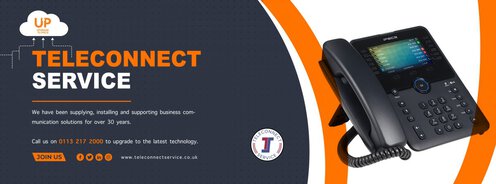Shifts in technology are rarely simple. New technologies such as cloud tend to solve known problems, but they create dilemmas of their own.
Many businesses are switching to the cloud for their communications, and for good reason. It offers significantly more flexibility and scalability than on-premises alternatives, with generally lower up-front costs. All organisations need to communicate. In the age of hybrid work, cloud is an appealing option to support remote collaboration. When deploying cloud solutions, we must be conscious of their potential vulnerabilities. If enterprises centralise everything without backup, the consequences of any outage are severe. The need to avoid single points of failure will never change. In this blog, we will consider some approaches to these dilemmas.
The growth of cloud.
According to researchers at Gartner, there is no doubt that cloud-hosted business technology is a growth market. Much of this growth is driven by the trend towards hybrid and remote work, which was dramatically accelerated by the COVID-19 pandemic. As the question of where we work becomes more flexible, businesses want more flexible technology. This is what cloud provides, from storage and backup to virtualised desktops. Our industry is no exception, as we see in the growing popularity of hosted phone systems and unified communications as a service (UCaaS). These are excellent solutions that are quick to deploy across multiple sites, and give remote workers the same great collaboration tools as those in the office.
Benefits of cloud communication.
Cloud offers far more flexibility to admins and users. Ericsson-LG Enterprise’s iPECS Cloud platform is a great example. This offers cloud-hosted telephony, along with unified communications (UC) features like videoconferencing and instant messaging through iPECS ONE. iPECS ONE, can be used on any device with an internet connection. Thanks to WebRTC technology, it can be accessed through a web browser, with no complex installations required. With cloud hosting, users can access these tools from anywhere. This supports the hybrid workplace by giving remote workers the same tools as those in the office. This makes remote collaboration easy, and offers businesses true flexibility. Adding users and locations is also easier, since you simply need to add more user licenses. This makes it more easily scalable than on-premises solutions. This scalability especially suits large and growing businesses, but there are also benefits for the SME market. Since cloud is paid for on a subscription model, there are few up-front costs. This is extremely helpful for SMEs and start-ups looking to promote a BYOD culture. Cloud offers great resilience as well. iPECS Cloud is hosted in tier-one data centers, away from your business location, which gives it geographic redundancy. And if there is an outage in one data center, the service automatically fails over to another.
Potential vulnerabilities of cloud.
As with pre-cloud technologies, problems can arise when deployments contain single points of failure. Although cloud is resilient in many ways, an all-cloud infrastructure carries this risk. Cloud depends on internet connectivity. Businesses with many cloud applications and users require enterprise-grade bandwidth and speeds to support good performance. Any outages to connectivity can cause severe local disruption. This is a location-specific question. In areas with well-developed internet infrastructure, outages and poor performance are less likely to be a problem. Nonetheless, the consequences of an outage are serious if there is no backup. The risks must be taken into an account. Similarly, a single, central UCaaS solution may be easy to deploy in a multi-site organisation. But if the UCaaS platform suffers an outage and there is no backup, all sites will be unable to communicate.
Hybrid technology for hybrid workplaces.
To avoid these problems, many enterprises are combining cloud and on-premises solutions. This requires strategic thought on the part of CTOs but can harness the benefits of both approaches. For example, a multi-site enterprise might run through a central UCaaS platform but locate PBXs on each site for failover. This makes the best of both options. The cloud platform supports all sites, but there is backup in case of UCaaS or internet outages. Hybrid solutions like these significantly reduce the risk of downtime. Ericsson-LG’s globally respected iPECS technologies can easily be adapted in these ways. The trend towards hybrid is a positive one, we have seen it led to success for many of our global partners, and their customers.
iPECS: communication solutions for every business.
Technology changes, but some things stay the same. Every technology carries some vulnerabilities along with many benefits. The goal should be to harness the benefits and minimise the risks. A hybrid strategy is an excellent way of achieving this, and iPECS solutions from Teleconnect can sit at the heart of this approach. Our cloud and on-premises communications platforms offer advanced features with high levels of resilience, along with a comprehensive range of optional add-ons from analytics to CRM integration. iPECS solutions can provide what all businesses should aspire to: robust technology that increases efficiency and minimises downtime. Contact us to find out more!
